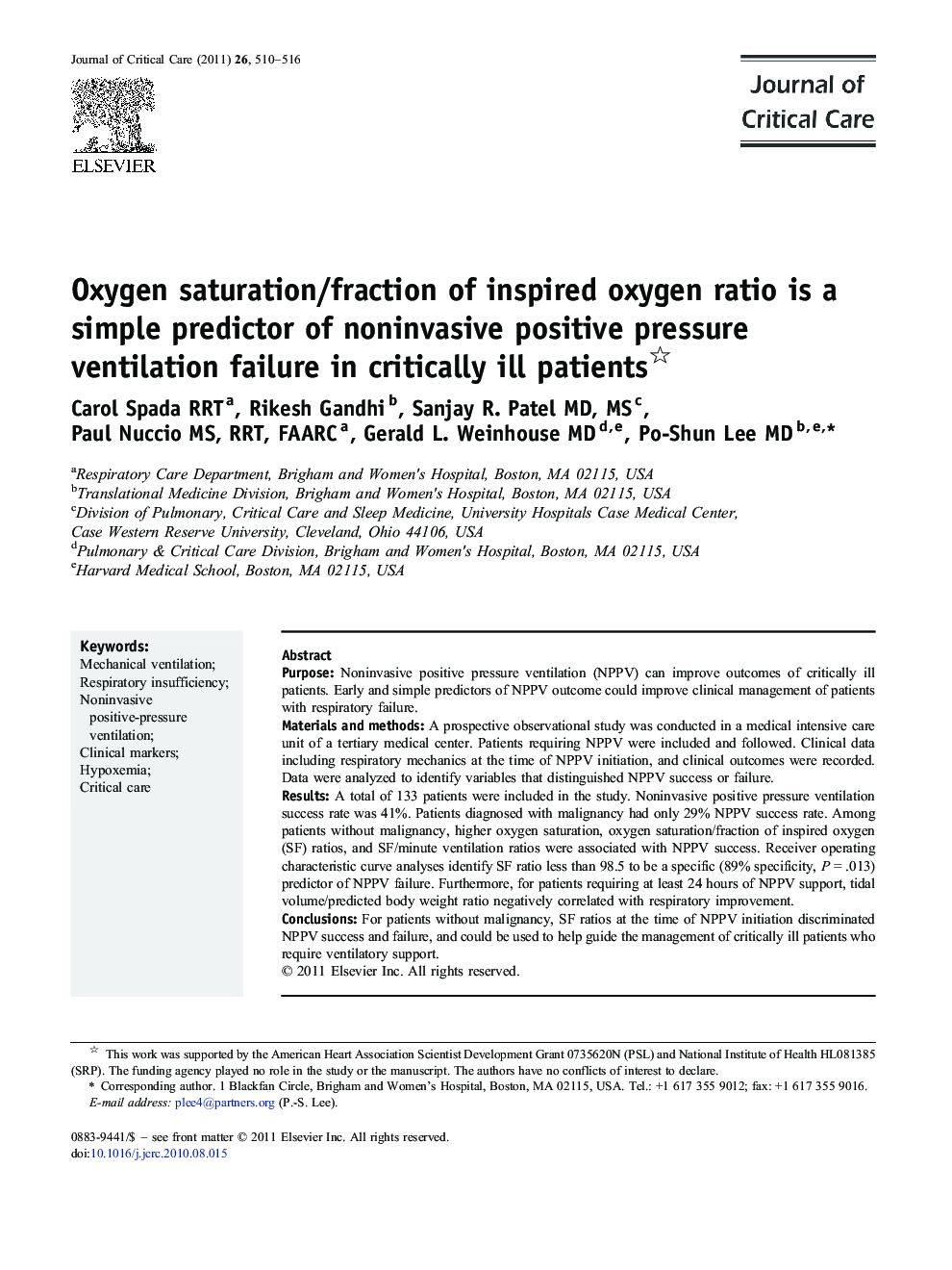| Article ID | Journal | Published Year | Pages | File Type |
|---|---|---|---|---|
| 2764912 | Journal of Critical Care | 2011 | 7 Pages |
PurposeNoninvasive positive pressure ventilation (NPPV) can improve outcomes of critically ill patients. Early and simple predictors of NPPV outcome could improve clinical management of patients with respiratory failure.Materials and methodsA prospective observational study was conducted in a medical intensive care unit of a tertiary medical center. Patients requiring NPPV were included and followed. Clinical data including respiratory mechanics at the time of NPPV initiation, and clinical outcomes were recorded. Data were analyzed to identify variables that distinguished NPPV success or failure.ResultsA total of 133 patients were included in the study. Noninvasive positive pressure ventilation success rate was 41%. Patients diagnosed with malignancy had only 29% NPPV success rate. Among patients without malignancy, higher oxygen saturation, oxygen saturation/fraction of inspired oxygen (SF) ratios, and SF/minute ventilation ratios were associated with NPPV success. Receiver operating characteristic curve analyses identify SF ratio less than 98.5 to be a specific (89% specificity, P = .013) predictor of NPPV failure. Furthermore, for patients requiring at least 24 hours of NPPV support, tidal volume/predicted body weight ratio negatively correlated with respiratory improvement.ConclusionsFor patients without malignancy, SF ratios at the time of NPPV initiation discriminated NPPV success and failure, and could be used to help guide the management of critically ill patients who require ventilatory support.
